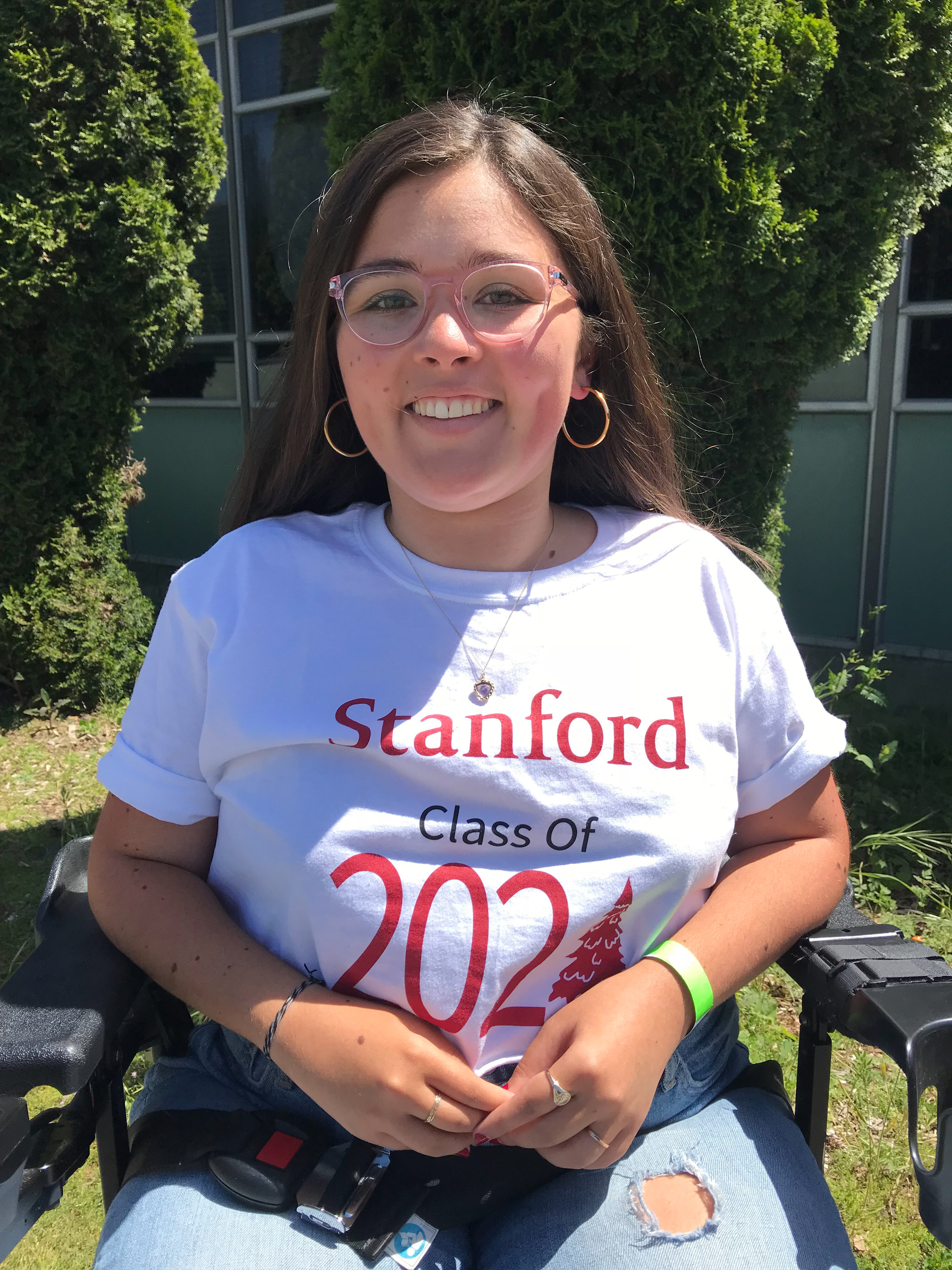Sylvia Colt-Lacayo ’23 is all moved in to her room in West Lag. She opens the door to her dorm with a press of a button on her lanyard and deftly wheels up the entry ramp in her motorized chair. Colt-Lacayo’s dorm room is a triple-turned-double, spacious enough to give her adorable golden lab, Nicola, room to wander between the two beds — one for Colt-Lacayo and one for her nighttime caretaker.
In early September, the LA Times featured Colt-Lacayo in an article about the affordability issues she and many other students with disabilities face in coming to college. The article highlighted the exorbitant costs of necessary day-to-day care, noting that universities often fail to provide sufficient financial support for students with disabilities.
In the wake of the article and the widespread attention it garnered, donations to Colt-Lacayo’s GoFundMe page soared, making it easier for her to finance her care.
Now, coming off of her first week of classes at the University, Colt-Lacayo is optimistic and pleased.
“I feel more looked after than I have in any educational institution,” she said.
She cited the Row, a central campus area lined with student-run houses, as a place where the University has succeeded in fostering accessibility.
“On the Row, every house is accessible, at least the first floor,” Colt-Lacayo said. “That’s not something that you will find at other universities.”
The ability to choose whether or not to attend an event is a new and welcome change for Colt-Lacayo.
“The idea that it’s a choice I get to make whether I want to go or not, that’s a really large privilege that I don’t think I would get anywhere else,” she said. “Those are just small details that really matter.”
Colt-Lacayo’s decision to come to Stanford was significantly impacted by these accessibility efforts.
“I actually feel like, as far as physical accommodations, I’ve been very happy with Stanford,” she said. “I definitely feel like I can move around very freely, and other places I can’t.”
While the campus at large has been accessible for Colt-Lacayo thus far, she relies on a staff of about five people to help her complete day-to-day tasks.
“[A caretaker] gets me up, meaning she lifts me out of bed,” she said. “I use something called a Hoyer lift, which is basically a sling that pulls me up into the air so I’m hanging up in the air. It’s actually really cool. My morning routine definitely takes longer than others.”
Asked if she’s experienced any adverse social effects as a result of her disability, Colt-Lacayo was quick to note the universal awkwardness of being a first-year college student regardless of such factors.
“I think being a freshman is weird and hard,” she said. “I wouldn’t say that having caregivers here has limited my social experience, but it definitely has hiccups.”
Her go-to example is the difficulty of making evening plans.
“I have a caretaker that comes every night at 10, so that means that I need to be here at 10 to at least let them in,” Colt-Lacayo said. “So if someone is like, ‘Hey, want to go out?’ I’m like, ‘Sure, but I can’t leave until 10:15.’”
Scheduling difficulties aside, Colt-Lacayo is responsible for personally handling the management and payroll of her full staff.
“So there are about five people working for me right now,” she said.
They include another Stanford student, a nursing student from a local college, her oldest sister and, temporarily, her mom.
Colt-Lacayo does receive financial aid from the University, and another portion of her tuition is paid for by the state. But the bulk of her care is covered by donations she has received through her GoFundMe page.
“I really realized in this past week and a half that I’ve been at school, that without the LA Times article and receiving that extra 20 grand, I don’t think I could’ve really done this permanently,” she said. “I’m really so grateful for the fact that I have that.”
Colt-Lacayo added that affordability issues faced by students with disabilities is a failure of governmental healthcare, not of educational institutions like Stanford.
“This is a systemic healthcare issue,” she said. “I should be able to afford to live on my own as a disabled person through the support of the government.”
Colt-Lacayo’s transition with her care staff has been mostly smooth, but there have been challenges, one of which occurred even before she arrived on campus.
“I had someone scheduled to do Monday through Thursday nights, and three days before New Student Orientation she texted me and she had a family emergency and she couldn’t do it anymore … and she was doing the majority of my night shifts,” she said.
Colt-Lacayo was able to find and hire an agency to cover the necessary night shifts, but at a much higher cost: $30 an hour. While this is was temporary “hiccup” — she’s found a replacement for the agency that is partially paid for through the state — the investment of her own time and money into the management of her care and staff is still significant.
“In a perfect world, I’d be rich and have an agency do my care full-time,” Colt-Lacayo said.
An agency, she explained more seriously, would handle payroll, vetting and hiring staff and scheduling, taking the majority of the everyday challenges off of her hands. In the meantime, Colt-Lacayo is content to enjoy her first year at the Farm.
Contact Zora Ilunga-Reed at zora814 ‘at’ stanford.edu.
